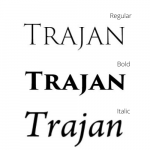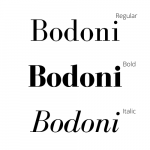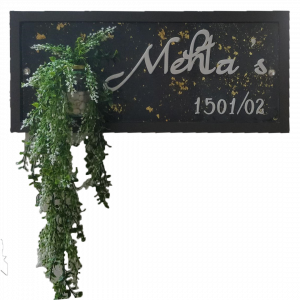The first thing a person visiting your home sees is the nameplate.
Yes! It helps to identify the house. True! It does make the first impression of your house magnificent. Without it, the home decor is unfinished. It is the initial and foremost thing a person marks about your house, so let’s make this decor element meriting.
If you wondering how to choose a perfect nameplate. We’ve got you covered. Read on!
When decorating the house, we carefully decide the walls, furniture, curtains, cabinets, tiles, etc. It takes several meetings with the architect and designers. All is then put together as per the theme and interests of the family members. When it comes to choosing a nameplate, the process does get overlooked and sped-up. We tend to freeze on something quick and less expensive, gently coaxing ourselves, “it’s just a nameplate.”
Interestingly, the nameplate is accountable for much more than we think.
“Nameplate gives your name the attention it deserves.”
– Pinksholic
Vastu Shastra and Astrology Principles for choosing Nameplates:
According to the Vastu ideology, the main door serves as an entry point to family members, positive energy and opportunities. Hence, having a clear, readable and pleasing nameplate helps positivity and opportunities to find you easily. Vastu elucidates to use metal nameplate if the door is in the North or West direction and use wooden nameplate if it is in the South or East direction.
The brightly lit and beautiful nameplate at entrance enables prosperity and wealth to find you easily.
Always fix the nameplate at chest level or higher. If placed at a lower level as per Vastu, it suppresses the person’s status and shows him in low light.
Different styles to design a nameplate:
These days you will find nameplates in various styles-
- Modern,
- Abstract,
- Conventional,
- Engraved,
- Etched,
- Moulded,
- Theme-based,
- Hand-made / painted,
- Textured,
- Religion-inspired,
- Native-language inspired,
- 3-D Relief,
- Nature-inspired,
…and plenty more.

Different materials to choose from when deciding on a nameplate:
Various materials used to create nameplates:-
- Teak-wood,
- Railway sleeper-wood,
- MDF,
- Plywood,
- Pinewood,
- Acrylic,
- Fibre,
- Siporex,
- Stone,
- Canvas,
- Marble,
- Mirror,
- Glass,
- Clay,
- fabric,
- terracotta,
- Metal – wrought iron, steel, brass,
…are popular options. Nameplates are customised in various shapes- square, rectangle, circle, house shape, monograms, ovals, decorative shapes, etc.
The current inclination is towards using various material, mediums and styles to create a unique look termed as mix-media.
It is always a good idea to select the material depending on the outdoor conditions. Analysing where you will be positioning the nameplate will help you decide on the material- illumination in the area, surface, temperature, weather, facing children playground (here you would need something that can stand the blow of a ball), etc.
What to write and which font to choose for nameplate:
The nameplate’s primary role is to give clarity of who the residents are and the house number.
Utmost care should be taken when designing the nameplate so that the font is visible. The idea is not to clutter up and leave breathing space for clear visibility of the font and house number.
The most common trend is to write one’s surname on the nameplate. But few people prefer having their complete names on the nameplate. Lately, people have chosen to write full name and names of all the family members (leaving some space for the soon-to-come family members name).
The fonts can be inscribed in different forms- painted, printed, carved, clay moulded, wooden/acrylic cut-outs, etc.
Your choice of typeface is as essential as other attractive designing details. You need to select the right font that goes with the design and fits well in the nameplate’s space. For longer names, choose a font that is closely aligned and vice versa.
The recommended height for letters for a door nameplate is 2.5inches – 3inches, and for gated property nameplate is minimum 5inches
Let me list out the fonts that are most fancied by the professional nameplate designers and why?
- Helvetica: Undoubtedly, Helvetica is the preferred font. The letters in this font are placed close to each other, leaving ample room to accommodate more text. Helvetica may not be perfect for areas where you need to spread out the alphabets to cover the area.

- Garamond: The second best font for home nameplates. Because of its ease of reading and spacing, this font is prevalent in magazines, websites, etc.

- Trajan: It’s the famous Hollywood poster font. Pick this if you want a touch of ancientness.

- Bodoni: This aesthetically pleasing font has a significant disparity between the thick and thin strokes. It is preferred when the text has to be painted or printed. Avoid using this font when you are looking for wooden/acrylic cut-outs.

- Bickham Script / Vivaldi / Sloop: The formal font. When you desire the curvy, flowy, handwritten style.
- Mitga: The bold vibe font. This font has crisp edges and filled look—best for short sized text on nameplates. With Mitga-fewer words will occupy more space.
- Samarkan: Indian desi / Regional font style. A fusion of local dialect resemblance to English alphabets. Samarkan blends well with the religious or traditional themed nameplate design.
Personalised Nameplates are in vogue:
Nowadays, people prefer nameplates that blend well with their house interior or exterior or both. The nameplate is specially designed to match the theme, look, colour, texture, mood, etc.
Many would want to choose the colour combination of the nameplate as per numerology or astrology.
At times, the profession and degree of the house owner are also mentioned on the nameplate.
Adding lights behind the nameplates is the in thing. The light peeking from around the nameplate edges makes it stand out in the dark corridor or passage.
Leena Mehta, a professional nameplate designer from Mumbai and co-founder of Creatif Citta, mentioned that “attractive nameplate is important for a good impression. Most preferred medium in the metro city is glass and wood with lettering in gold. City life means a lack of space, especially for gardening. So clients are opting for vertical garden concepts (a small planter) on the nameplate. Garden on the wall does look awesome.”

Apart from the main door nameplate, people nowadays prefer to have personal room door name boards. These personal room door name boards are designed as per the individual’s likes and character occupying that room. A boy in love with a rock band and music has his name board in the shape of a guitar outside his room door. A girl prefers colours like pink, white, floral etc. for her name board. A teenager often prefers to lay some rules (for people entering his room) along with his name on the room door name board.
Tips for fixing nameplate at the door:
- Choose the adjoining wall (if place permits) preferably on the left side or on the main door to fix the nameplate.
- Always fix the nameplate at eye-level, so that it is visible.
- The nameplate can be fixed using- screws, tape or hung. Whatever you choose, make sure it is sturdy and holds the nameplate in place. The nameplate should not tilt.
- Ensure that the font (name, flat number) is big enough to be visible from a distance of at least 3 feet.
- The design should blend well with the main door to look pleasing. The design should be stylish yet simple. Avoid cluttering the nameplate with too many elements.
- Keep the area well-lit.
- Keep the nameplate clean.
Common Factors That Damage Nameplates:
- Scratches: Scraping the smooth surface due to contact or friction with other objects. This might scar the smooth finish.
- Breakages: This would occur to nameplates that have other decorative stuff stuck on it. Commonly the pieces of wooden/acrylic letters adhered to the nameplate comes off. This damage usually results after a rough contact or fall.
- Chemicals: This usually refers to the cleaning agents used to keep the nameplate clean. But, it had an adverse effect by damaging the finish, colour, embellishments on the nameplate. Ask your nameplate designer for the cleaning and care instructions.
- Temperature: Nature elements like heat, rain, humidity can leave their effect on the nameplate. Too much exposure to the sun can lead to colour fading. The low temperature might reduce adhesive stickiness—the best way to control this to choose materials designed to resist these conditions.
“A good nameplate at your doorstep is an excellent opportunity to introduce yourself.
Hey! you do not want to miss that.”
-Pinksholic
Ready to get a nameplate of your own? Browse our full selection of designer customised nameplates today.



